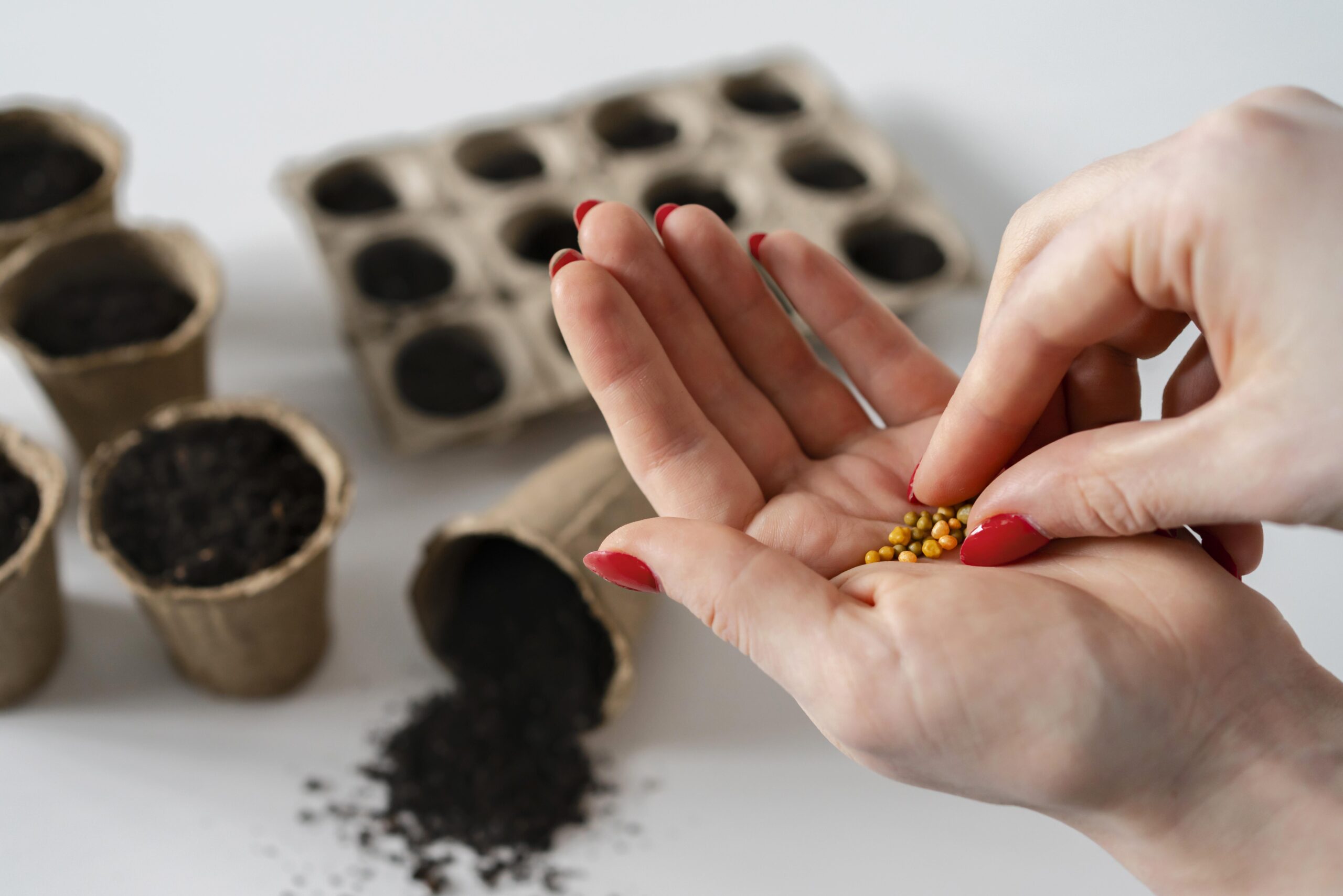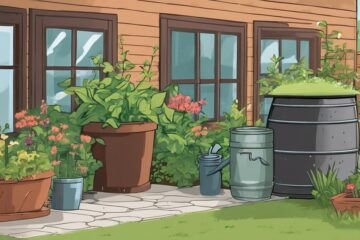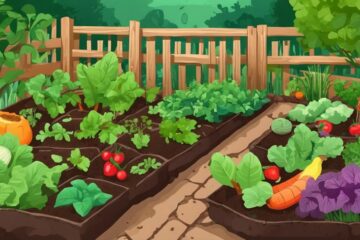Have you ever wondered how to infuse a tangy twist into your vegetable garden? Starting tart vegetable seeds indoors might just be the answer you're looking for. From zesty cherry tomatoes to crisp bell peppers, the possibilities are endless.
But how exactly can you kickstart this flavorful journey? Let's uncover the secrets to nurturing these tangy delights from seed to harvest, ensuring a mouthwatering experience that will leave you craving more.
Choosing the Right Seeds
When selecting seeds for indoor starting, opt for vegetable varieties like tomatoes, peppers, and cucumbers that are well-suited for this method.
It's important to choose between hybrid or heirloom vegetable seeds based on your preferences and gardening goals. Hybrid seeds are bred for specific traits like disease resistance or high yield, while heirloom seeds offer traditional, open-pollinated characteristics. Both types can thrive when started indoors if chosen wisely.
Make sure that the vegetable seeds you select are fresh and high-quality to boost their germination success. Before purchasing, check the seed packets for any specific instructions regarding indoor starting, such as planting depth and spacing recommendations.
Selecting Containers for Seed Starting
Consider utilizing deli containers with clear plastic lids or Dixie cups for your seed starting needs to create an ideal mini-greenhouse effect for your vegetable seeds indoors. These containers provide a controlled environment for seedlings, promoting healthy growth.
Dixie cups, when placed inside deli containers, offer an organized and best-effective solution for starting your vegetable seeds. They're easy to manage and help retain moisture for excellent germination.
Additionally, repurposing any open container can be an effective way to kickstart your indoor seed starting process. By selecting the right containers for your seed starting venture, you set the stage for successful germination and robust seedling development, preparing them for eventual outdoor planting.
Preparing the Seed Starting Mix
For perfect seed germination, select a lightweight, sterile seed-starting mix free of contaminants. A commercially prepared seed-starting mix is best for indoor seed starting. Make sure the mix is sterile to promote healthy seedlings.
Using garden soil indoors can compact and impede root growth, so it's best to stick with a proper seed-starting mix. This mix retains moisture effectively, important for seed germination and early root development. Adequate moisture retention also helps with aeration, creating ideal conditions for root growth.
Sowing Seeds Indoors
To sow seeds indoors successfully, start by preparing the seed starting mix with warm water to encourage healthy germination. Moisten the seed starting mix thoroughly before sowing seeds in flats or individual containers.
Create shallow furrows for the seeds, adjusting the seed density based on your transplanting plans. Water the seeds gently using a mister or spray bottle to prevent shifting or burying them too deep. Cover the containers with clear plastic or plastic bags to retain moisture, mimicking a mini greenhouse effect.
Place the containers in warm locations indoors, away from direct sunlight, and monitor the temperature to avoid overheating during germination. This process will help your seeds germinate effectively while ensuring proper moisture retention.
Providing Proper Lighting
After successfully sowing your seeds indoors, the next critical step is making sure your seedlings receive proper lighting for healthy growth. To provide the best conditions for your seedlings, follow these tips:
- Use full spectrum grow lights with a color temperature of 6500K for best seedling growth indoors.
- Position the grow lights 2-3 inches above the seedlings to prevent leggy growth and promote strong stems.
- Keep the grow lights on for 14-16 hours a day to simulate sunlight and provide adequate light for seedlings.
- Rotate trays regularly to ensure all seedlings receive uniform light exposure for balanced growth.
- Monitor seedlings for signs of stretching towards the light, indicating the need for closer light placement.
Watering and Monitoring Growth
Maintain consistent moisture levels in the soil for healthy seedling growth by gently watering using a mister or spray bottle to prevent soil disturbance. Monitor the soil's moisture levels daily to keep it consistently moist without essential watering, which can lead to issues like damping off or root rot.
Adjust your watering frequency based on the plant's specific requirements and growth stage to support healthy development. Necessary watering is critical for the overall success of your seedlings. By paying close attention to the moisture levels in the soil and avoiding overwatering, you can help your seeds germinate and grow into robust seedlings ready for transplanting outdoors.
Transitioning Seedlings Outdoors
Prepare your seedlings by making sure they've developed 8-10 sets of leaves before moving them outdoors for best growth.
To successfully move your seedlings outdoors, follow these tips:
- Wait for the last frost date: Avoid planting seedlings before this date to prevent frost damage.
- Protect from frost: Shield seedlings using milk jugs or covers until the weather warms up.
- Check soil moisture: Guarantee proper soil moisture levels and water as needed for healthy growth.
- Avoid premature planting: Waiting for the last frost date is essential to prevent plant loss.
- Monitor the shift: Keep an eye on your seedlings as they adapt to the outdoor environment.
Frequently Asked Questions
How Do You Start Vegetable Seeds Indoors?
To start vegetable seeds indoors, choose the right containers and use quality seed starting mix. Plant seeds at the correct depth, provide warmth and light, water consistently, and avoid overwatering. Following these steps will help your seeds grow into healthy seedlings.
How Long Does It Take for Vegetable Seeds to Sprout Indoors?
When starting vegetable seeds indoors, they typically sprout within 5 to 14 days, varying by type. Factors like temperature and moisture influence germination speed. Providing proper conditions accelerates sprouting. Monitor trays daily for progress.
Is It Too Late to Start Vegetable Seeds Indoors?
It's not too late to start vegetable seeds indoors. Check your last frost date and seed packets for guidance. Adjust your schedule accordingly and choose fast-growing varieties. Provide proper care for successful late starts.
Can You Use Dixie Cups to Start Seeds?
You can use Dixie cups to start seeds indoors. They are cost-effective and easy to manage, providing controlled growing conditions. Dixie cups are suitable for a variety of vegetable seeds, helping guarantee successful germination and growth.
Conclusion
You've got this! Starting vegetable seeds indoors is a game-changer for your garden.
With the right seeds, containers, mix, lighting, and care, you'll soon have strong, healthy seedlings ready to thrive outside.
Keep watering, monitoring, and moving them outdoors for a successful growing season.
Happy gardening!





